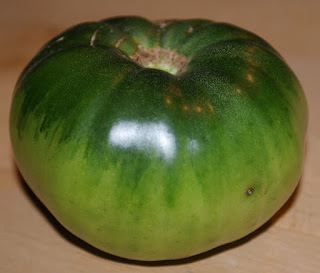 |
| A completed burner for making biochar |
It may just be the next best thing since sliced bread.
Biochar.
Or, if you like something more familiar… charcoal.
It’s what you get when you partially burn wood or other
organic matter. Black, crumbly charcoal.
When I dumped the ash buckets today, I sifted and separated
the charcoal from the ash with a screen I use for compost. That resulted in a
bucket full of charcoal… or, biochar, it sounds more sophisticated.
A couple of years ago, I’d read about biochar being a good
soil amendment and was intrigued, but not intrigued enough to actually try
making any and using it. About three weeks ago I attended a workshop about
biochar, which included construction of a burner to more efficiently make it.
That’s when I was really sold on it.
This char does not possess any special nutrients, but is
porous and full of nooks and crannies that make good homes for all those
beneficial fungi and other microorganisms so essential to soil health and plant
nutrition. Also, the chemical structure of char (largely carbon) causes it to attract
various ions of common plant nutrients, thus retaining soil nutrients long term
when they might otherwise escape. The char also retains moisture, making plants
growing in it more drought tolerant. And finally, it improves the structure of
soil, turning clay into friable earth and sand into fertile fields.
And if that weren’t enough, biochar will save the world.
 |
| Cut a hole in the lid into which the stove pipe will fit tightly. With tin snips, make tabs around the bottom of one lenght of pipe... |
Or, at least, it might help reduce the release of greenhouse
gases, particularly carbon dioxide, by keeping lots of carbon in the soil. If I
understand the science correctly, when plants decay or are fully burned down to
ash, pretty much all of the carbon in them is oxidized – that is, it links up
with oxygen to create carbon dioxide and other greenhouse gases. By partially
burning this matter, you prevent up to half of the carbon from being released
into the atmosphere. Mixing it with soil sequesters the carbon, locks it up in
the soil for centuries. If enough people do this, the theory goes, we can not
only halt the increase of carbon dioxide in the atmosphere, but start
decreasing it, thus preventing (or at least slowing) warming of the earth’s
atmosphere.
 |
| ...then slip the pipe into the lid and bend back the tabs so the pipe is secured to the lid. The other two lengths will be added only when you do a burn. |
So, by mixing this char in my soil I can not only get
healthier and more nutritious vegetables and fruits, but also save the world
from global warming.
Hmmmm.
All of this theory is intriguing enough, but at the
workshop, we heard first hand reports of its miraculous nature from people who
have used it.
You can make biochar in a trench in the garden, as
demonstrated in this article that appeared in Mother Earth News a few years
ago. Or you can make it more efficiently by creating a burner from a 30- (or
50-) gallon steel barrel with a tight-fitting lid, three lengths of 8-inch
stove pipe, some ceramic fiber insulation (fiberglass will deteriorate rapidly
with the high heat of burning the char), chicken wire, a pair of tin snips and
a half-inch drill bit for use on metal.
 |
| Wrap the ceramic fiber insulation around the barrel and secure it with chicken wire. |
 |
| Two rows of holes at the lower end of the bottom length of pipe create a "second burn," which creates a smoke-free burn. |
As a caveat, I read a recent article saying that the European Union has decided that biochar wil not save the world, and that it should not bear the exotic name biochar, but simply be called "plant charcoal." Whatever. The article did not cite particular studies or info as to why they made this decision. However, the testimonials I heard on that chilly Sunday afternoon were enough to convince me that at least it will help my garden grow.













































